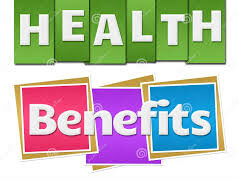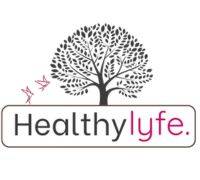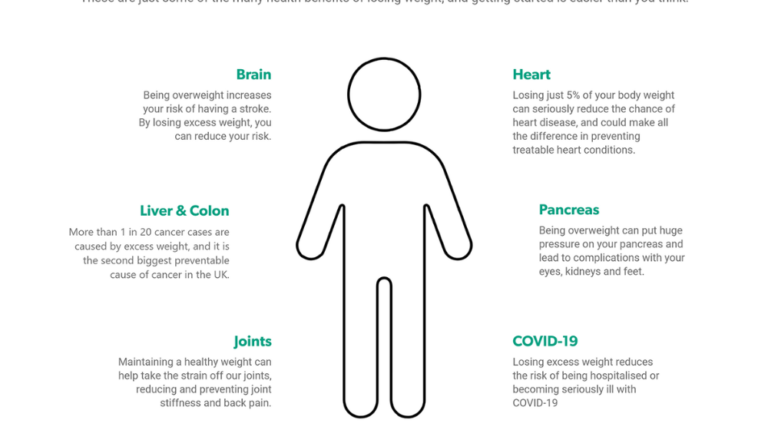Nowadays, weight loss is very important for living the life in the healthy and wealthy manner. Here we will find that what should be the diet plan for the weight loss of the individuals.

Why Is Weight Loss Important for Health
Weight loss isn’t just about getting slimmer or fitting into smaller clothes—it’s about embracing a healthier lifestyle that can significantly improve your overall well-being. Whether you’re looking to lose a few pounds or embark on a major transformation, understanding the ins and outs of weight loss can help you achieve sustainable results. In this guide, we’ll explore everything from the health benefits of weight loss to the best diet plans, the role of celery in weight loss, and why timing matters. Let’s dive in!
Understanding Weight Loss
What Is Weight Loss?
At its core, weight loss occurs when your body burns more calories than it consumes. This creates an energy deficit, causing your body to tap into stored fat for fuel. While that sounds simple enough, weight loss can be influenced by many factors, including metabolism, exercise, and even stress levels.
Losing excess weight isn’t just about looking good in a swimsuit; it has profound benefits for your health. Carrying extra weight, especially around your abdomen, is linked to a higher risk of chronic conditions such as heart disease, type 2 diabetes, and certain cancers. By shedding those extra pounds, you lower your risk of these diseases and give your body the chance to function optimally.
The Impact of Weight Loss on Health (1)
Weight Loss and Heart Health
One of the most compelling reasons to lose weight is the positive impact it has on heart health. Excess body weight strains your heart, raising your blood pressure and cholesterol levels. By losing weight, you reduce this strain, which helps improve cardiovascular function, lowers your risk of heart disease, and promotes overall longevity.
Impact on Diabetes and Blood Sugar Levels
If you’re pre-diabetic or have type 2 diabetes, weight loss can have a transformative effect. Losing even a small amount of weight can improve your insulin sensitivity, helping your body regulate blood sugar more effectively. In some cases, weight loss can even reverse type 2 diabetes, reducing the need for medications and helping people lead healthier, more active lives.
Weight Loss and Mental Health
While most people focus on the physical benefits of weight loss, there are powerful mental health benefits too. Losing weight can improve your mood, boost self-esteem, and reduce symptoms of anxiety and depression. Many individuals report feeling more confident and empowered as they shed unwanted pounds, which creates a positive cycle of emotional and psychological well-being.
How Weight Loss Improves Mood
When you lose weight, your body releases endorphins—those feel-good hormones that improve mood and reduce stress. Regular physical activity, a key part of most weight loss journeys, further boosts endorphin production, making you feel happier and more relaxed.
The Psychological Benefits of Achieving Weight Loss Goals
Every time you reach a weight loss milestone, it can give you a sense of accomplishment and a significant boost to your confidence. Whether it’s losing the first five pounds or hitting your ultimate goal, these milestones serve as motivation to keep moving forward. Achieving your weight loss goals can help you build resilience, discipline, and mental strength that extend far beyond the scale.

Benefits of Weight Loss
Improved Mobility and Physical Health
One of the most immediate benefits of weight loss is enhanced mobility. Losing weight reduces the strain on your joints, which can make everyday activities, like walking, climbing stairs, and lifting objects, feel easier. With reduced joint pain and improved flexibility, you’re more likely to engage in physical activities and enjoy a more active lifestyle.
Enhanced Immune Function
Losing weight can help strengthen your immune system by reducing inflammation in the body. Chronic inflammation is linked to various health issues, including autoimmune diseases, allergies, and even certain cancers. By reducing excess weight, you give your body a better chance of fighting off infections and staying healthy.
Reduced Risk of Chronic Diseases
Carrying excess weight puts you at a higher risk for many chronic diseases. In addition to heart disease and diabetes, obesity can lead to conditions such as hypertension, sleep apnea, stroke, and even certain types of cancer. By losing weight, you drastically reduce the likelihood of developing these conditions and improve your overall life expectancy.
Weight Loss and Cancer Prevention
There’s growing evidence to suggest that losing weight—especially around the belly—can reduce your risk of certain cancers, including breast, liver, and colon cancer. This is because excess fat in the body can lead to higher levels of estrogen and insulin, both of which can contribute to cancer cell growth.
How Weight Loss Reduces Joint Pain
Excess weight, particularly around the abdomen, adds unnecessary stress to your joints. Losing weight, especially through a combination of exercise and diet, can relieve this pressure, particularly in weight-bearing joints like the knees and hips. This can significantly reduce joint pain, inflammation, and stiffness, improving your ability to move freely and comfortably.

Weight Loss Diet Chart: A Balanced Approach
General Guidelines:
- Eat in moderation: Focus on portion control.
- Hydrate well: Aim for 8-10 glasses of water daily.
- Avoid processed foods: Stick to whole, unprocessed foods.
- Eat every 3-4 hours: This helps maintain metabolism.
- Limit sugars and refined carbs: Opt for complex carbs instead.

Sample 7-Day Diet Plan for Weight Loss
Day 1:
- Breakfast:
- 2 boiled eggs with spinach and tomatoes.
- 1 slice of whole-grain toast.
- Black coffee or green tea (no sugar).
- Mid-Morning Snack:
- 1 apple or a handful of almonds (about 10-12).
- Lunch:
- Grilled chicken breast (100-150g) with a mixed vegetable salad (cucumber, lettuce, carrots, and bell peppers) and olive oil & lemon dressing.
- 1/2 cup quinoa or brown rice.
- Evening Snack:
- A small bowl of Greek yogurt with chia seeds.
- Dinner:
- Baked salmon (100-150g) with steamed broccoli and a side of sweet potato (1 medium).
Day 2:
- Breakfast:
- Oats porridge with chia seeds, almond milk, and a few berries.
- Green tea.
- Mid-Morning Snack:
- Carrot sticks or cucumber slices.
- Lunch:
- Grilled tofu or paneer with sautéed spinach and mushrooms.
- 1/2 cup brown rice.
- Evening Snack:
- A handful of sunflower seeds or pumpkin seeds.
- Dinner:
- Chicken or turkey breast stir-fried with mixed veggies (zucchini, bell peppers, onions).
- Side of cauliflower rice.
Day 3:
- Breakfast:
- Smoothie with spinach, avocado, banana, and almond milk.
- 1 boiled egg.
- Mid-Morning Snack:
- A handful of walnuts or mixed nuts.
- Lunch:
- Grilled shrimp (100-150g) or lean beef with a large salad (tomatoes, cucumber, greens, olives).
- 1/4 cup chickpeas or lentils.
- Evening Snack:
- 1 boiled egg or a small bowl of mixed berries.
- Dinner:
- Baked chicken or fish (100-150g) with steamed green beans and roasted butternut squash.
Day 4:
- Breakfast:
- Scrambled eggs with avocado and mushrooms.
- 1 slice of whole-grain toast.
- Green tea.
- Mid-Morning Snack:
- 1 small orange or a pear.
- Lunch:
- Turkey or chicken wrap with whole-grain tortilla, mixed veggies, and hummus.
- Evening Snack:
- Sliced cucumber or carrot sticks with a tablespoon of hummus.
- Dinner:
- Grilled fish (salmon, tilapia) with roasted Brussels sprouts and sweet potato wedges.
Day 5:
- Breakfast:
- Greek yogurt with flaxseeds, a few almonds, and berries.
- Mid-Morning Snack:
- A boiled egg or a handful of almonds.
- Lunch:
- Grilled chicken salad with avocado, mixed greens, cherry tomatoes, cucumber, and a light vinaigrette.
- Evening Snack:
- A small apple or a handful of baby carrots.
- Dinner:
- Stir-fried tofu with broccoli, bell peppers, and a dash of soy sauce.
- Side of cauliflower rice.
Day 6:
- Breakfast:
- Oats with almond butter, chia seeds, and cinnamon.
- Black coffee or herbal tea.
- Mid-Morning Snack:
- 1 small banana with 1 tablespoon of peanut butter (no sugar added).
- Lunch:
- Grilled chicken with quinoa and a side of sautéed kale and mushrooms.
- Evening Snack:
- Handful of mixed nuts or seeds.
- Dinner:
- Baked cod or chicken with a side of green beans and roasted cauliflower.
Day 7:
- Breakfast:
- Avocado toast with poached eggs (1-2 eggs).
- Green tea.
- Mid-Morning Snack:
- A handful of mixed berries or a small apple.
- Lunch:
- Turkey or chicken breast with a cucumber and tomato salad, dressed with olive oil.
- Evening Snack:
- Celery sticks with almond butter or hummus.
- Dinner:
- Grilled shrimp or lean beef stir-fry with zucchini, onions, and bell peppers.
- Side of brown rice or cauliflower rice.
Key Foods to Include for Weight Loss:
- Protein-rich foods: Chicken, turkey, tofu, beans, lentils, fish, and eggs.
- Healthy fats: Avocados, olive oil, nuts, seeds, and fatty fish like salmon.
- Low-calorie veggies: Leafy greens, cucumbers, tomatoes, bell peppers, broccoli, cauliflower.
- Whole grains: Brown rice, quinoa, oats, and whole-wheat bread or pasta in moderation.
- Fruits: Berries, apples, oranges, and pears in moderation.
Key Points to Remember:
- Portion Control: Be mindful of portion sizes. Even healthy foods can contribute to weight gain if eaten in excess.
- Exercise: Combine this diet plan with regular exercise (cardio, strength training) for best results.
- Sleep: Aim for 7-9 hours of sleep to support your metabolism and overall health.
- Stay Hydrated: Drink plenty of water to aid digestion and support weight loss.
Weight Loss Strategies and Diet Plans
Achieving weight loss is about more than just cutting calories; it requires a balanced approach involving the right diet, exercise, and healthy lifestyle changes. Let’s take a closer look at some of the most effective weight loss strategies and diet plans.
Best Diets for Weight Loss
There are countless diets out there, but some have proven to be more effective than others. Here are some of the top weight loss plans:
Low-Carb Diets
Low-carb diets, such as the ketogenic (keto) and Atkins diets, have gained popularity for their ability to promote weight loss. By reducing your intake of carbs (especially refined sugars and starches), your body enters a state called ketosis, where it starts burning fat for fuel instead of carbohydrates.
Intermittent Fasting
Intermittent fasting (IF) is a dietary strategy where you alternate between periods of eating and fasting. It’s known to help create a calorie deficit, allowing the body to burn fat more effectively. Popular IF patterns include the 16/8 method (fast for 16 hours, eat during an 8-hour window) and the 5:2 method (eat normally for 5 days, restrict calories for 2).
Exercise Plans for Effective Weight Loss
While diet is important, exercise is crucial for accelerating weight loss and building lean muscle mass. Combining cardio with strength training is the most effective way to burn fat and build muscle.
Cardio vs. Strength Training: What’s Best for You?
Both cardio and strength training have their unique benefits when it comes to weight loss. Cardio exercises like running, cycling, and swimming help you burn calories, while strength training builds muscle, which boosts your metabolism and helps you burn more calories even when you’re at rest. The best approach is to combine both types of exercise into your routine for maximum results.
Celery and Weight Loss
You may have heard that celery is a “weight loss miracle,” but what’s the real deal with this crunchy vegetable? Let’s break it down.
How Celery Helps Burn Calories
Celery is often referred to as a “negative-calorie food,” meaning it takes more energy to digest than it provides in calories. While it’s not quite a miracle food, celery can help you feel fuller for longer, making it a great low-calorie snack for those on a weight loss journey.
Celery’s Nutritional Profile for Weight Loss
Despite its low-calorie count, celery is packed with nutrients. It’s an excellent source of fiber, which helps with digestion and keeps you feeling satisfied. It also contains vitamins like A, K, and C, as well as antioxidants that support overall health.
Fiber Content in Celery: A Key to Fullness
Celery is high in soluble fiber, which absorbs water and expands in your stomach, helping you feel fuller for longer. This can reduce cravings and help prevent overeating, making it easier to stick to your weight loss goals.
Celery as a Low-Calorie Snack Option
With only 10 calories per stalk, celery is one of the best low-calorie snacks available. It’s hydrating, crunchy, and pairs well with healthy dips like hummus or peanut butter, making it a satisfying snack that won’t derail your diet.
Weight Loss Rules and Timing
Believe it or not, when you eat may be just as important as what you eat. Here’s why timing matters when it comes to weight loss.
The Right Time to Eat for Weight Loss
Eating earlier in the day can help support your metabolism, allowing your body to burn calories more efficiently. Aim for a balanced breakfast to kickstart your metabolism and avoid eating large meals late at night, as this can interfere with fat burning.
How Meal Timing Affects Fat Burning
Meal timing plays a key role in regulating your circadian rhythm (the body’s internal clock) and optimizing fat burning. Research suggests that eating during the day, rather than at night, helps promote fat loss.
Conclusion: Sustainable Weight Loss for Health
The journey to weight loss isn’t just about dieting or exercising for a short period—it’s about creating lasting, healthy habits that improve your physical, mental, and emotional well-being. By focusing on a balanced diet, regular exercise, and understanding the role of timing, you can achieve and maintain your weight loss goals for years to come.
Remember, sustainable weight loss is about more than just a number on the scale; it’s about feeling good and improving your overall quality of life.
FAQs
FAQ 1: How much weight can I lose in a month?
A healthy and sustainable rate of weight loss is about 1-2 pounds per week. This means you can expect to lose 4-8 pounds in a month, depending on your
approach.
FAQ 2: Is intermittent fasting safe?
Intermittent fasting is generally safe for most people, but it’s important to listen to your body. If you have any underlying health conditions, consult with a doctor before starting any new eating pattern.
FAQ 3: Can celery alone help me lose weight?
Celery is a great low-calorie snack, but weight loss requires a balanced diet, exercise, and consistency. Celery can support your goals, but it’s not a magic solution on its own.
FAQ 4: How much exercise do I need for weight loss?
Aim for at least 150 minutes of moderate-intensity exercise per week, along with strength training 2-3 times a week. This will help you burn calories and build muscle to enhance weight loss.
FAQ 5: What is the best time to eat for weight loss?
It’s generally best to eat earlier in the day and avoid large meals late at night. This helps support your metabolism and can improve fat-burning efficiency.
For More Information, Visit https://healthylyfe.co.uk/


